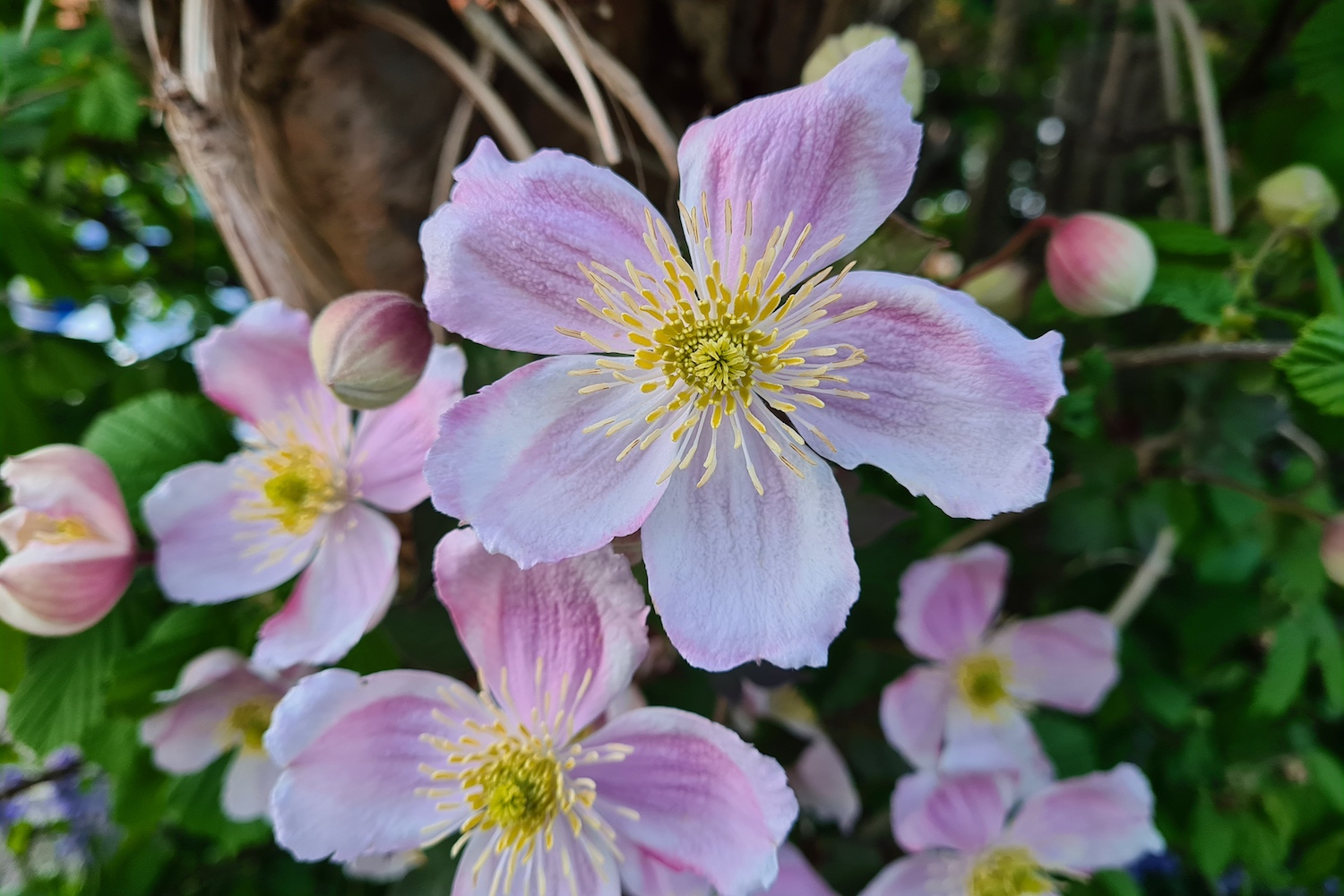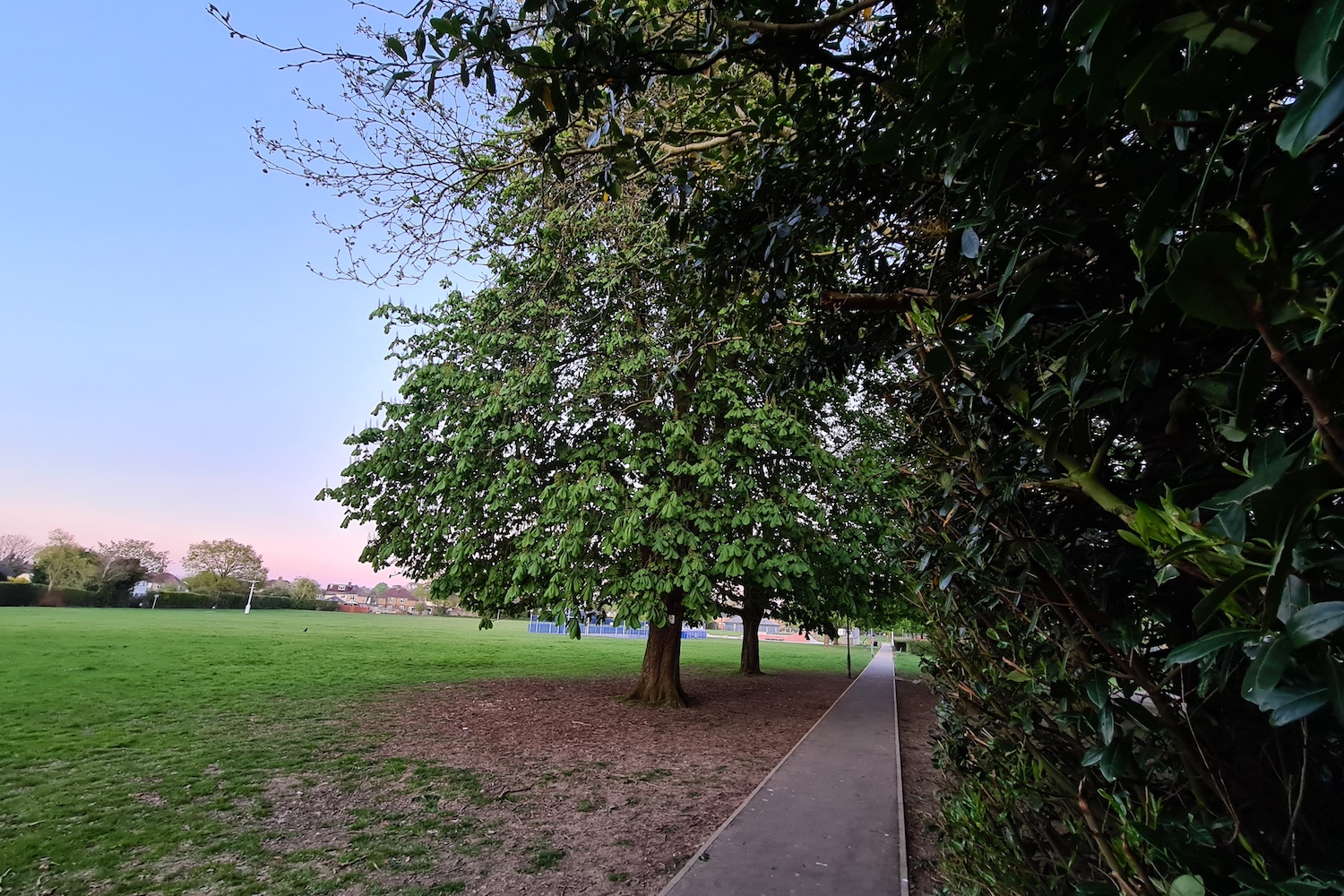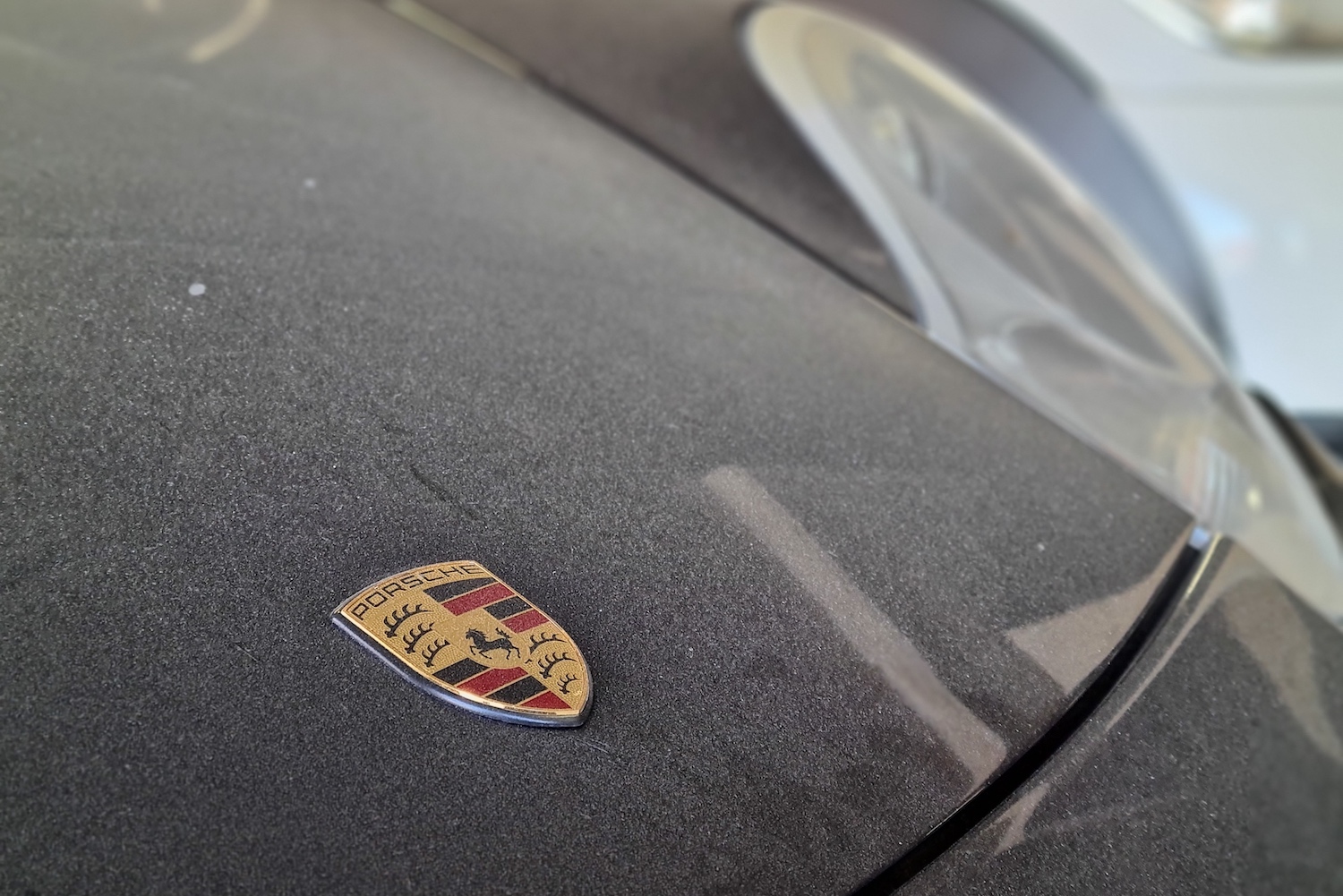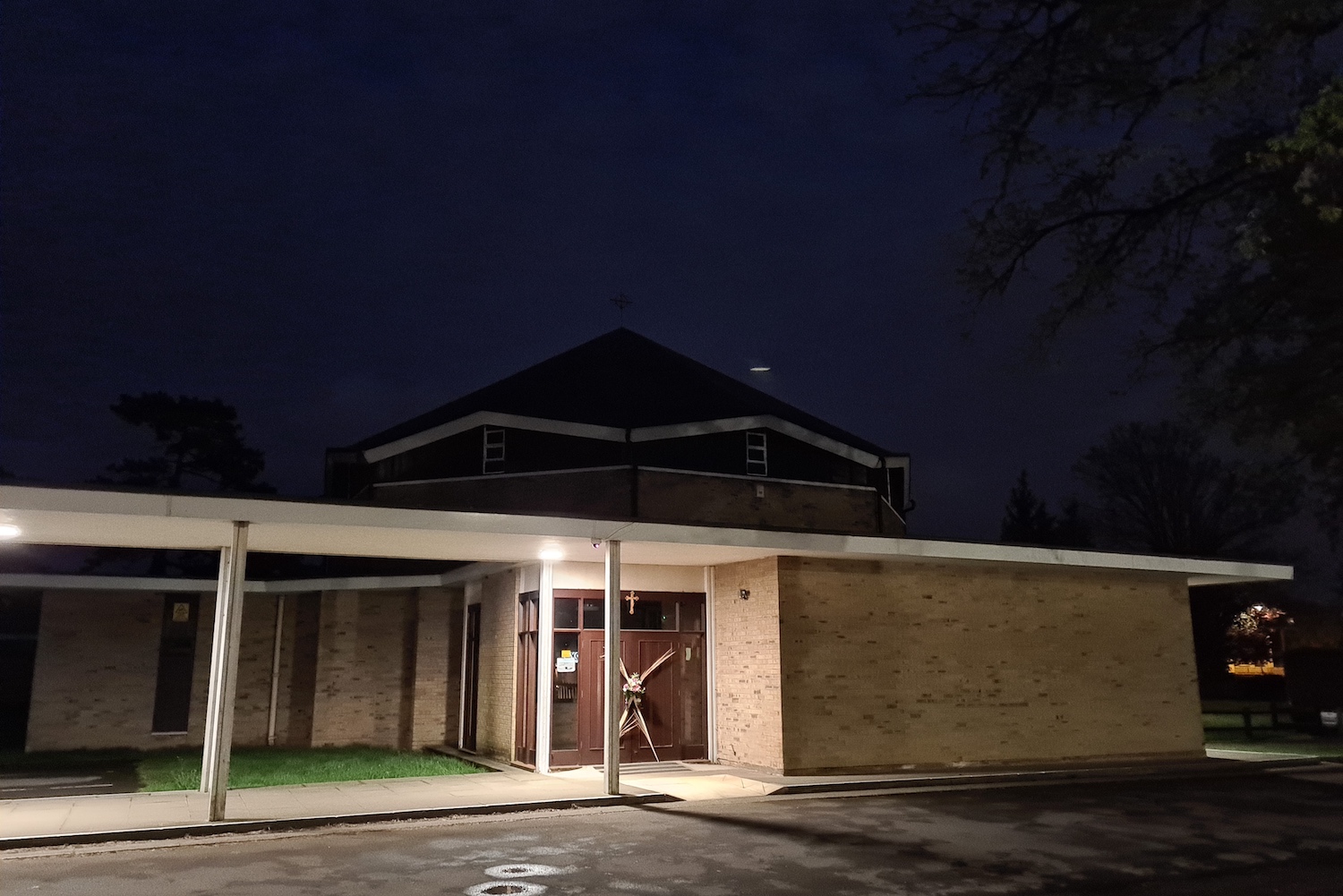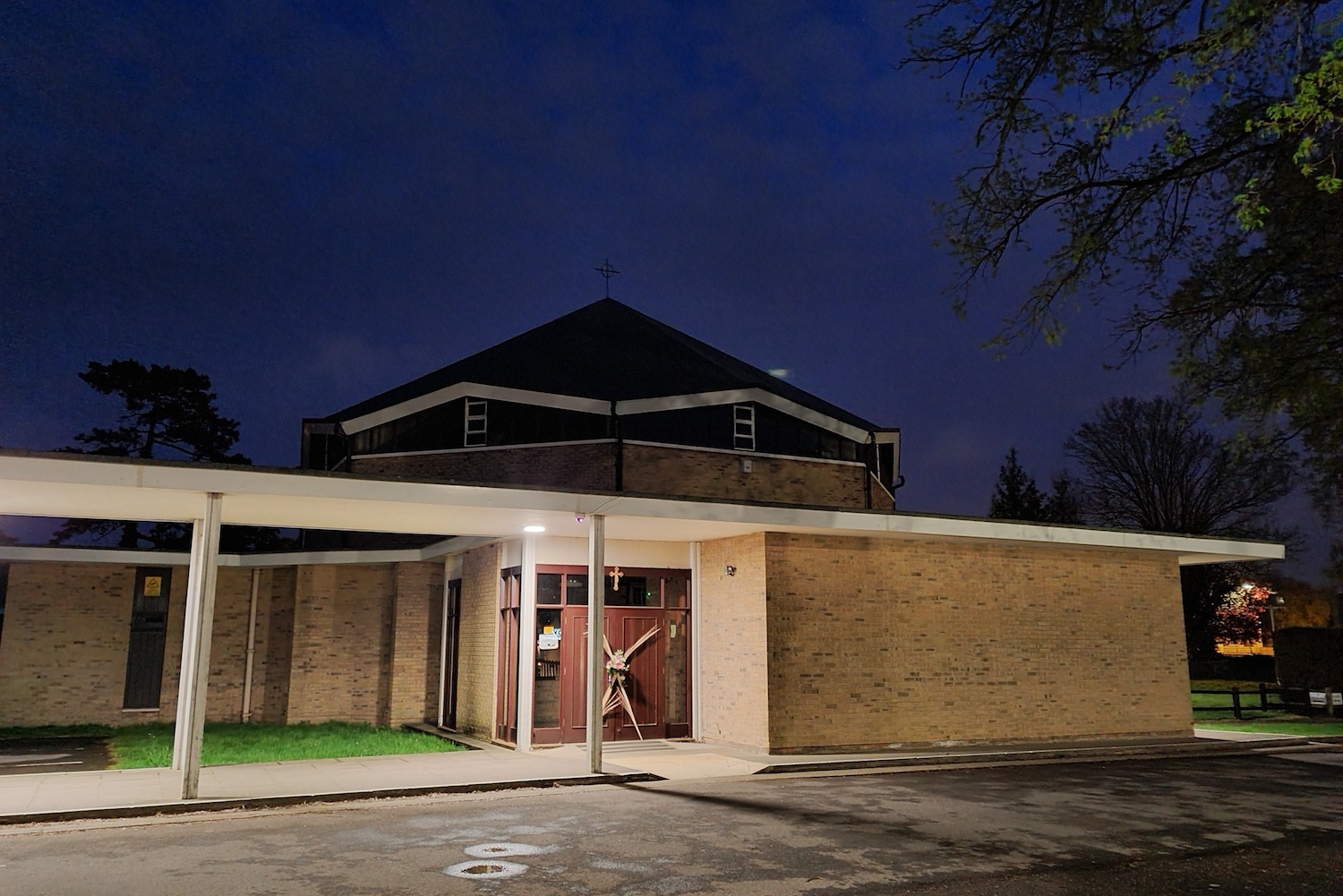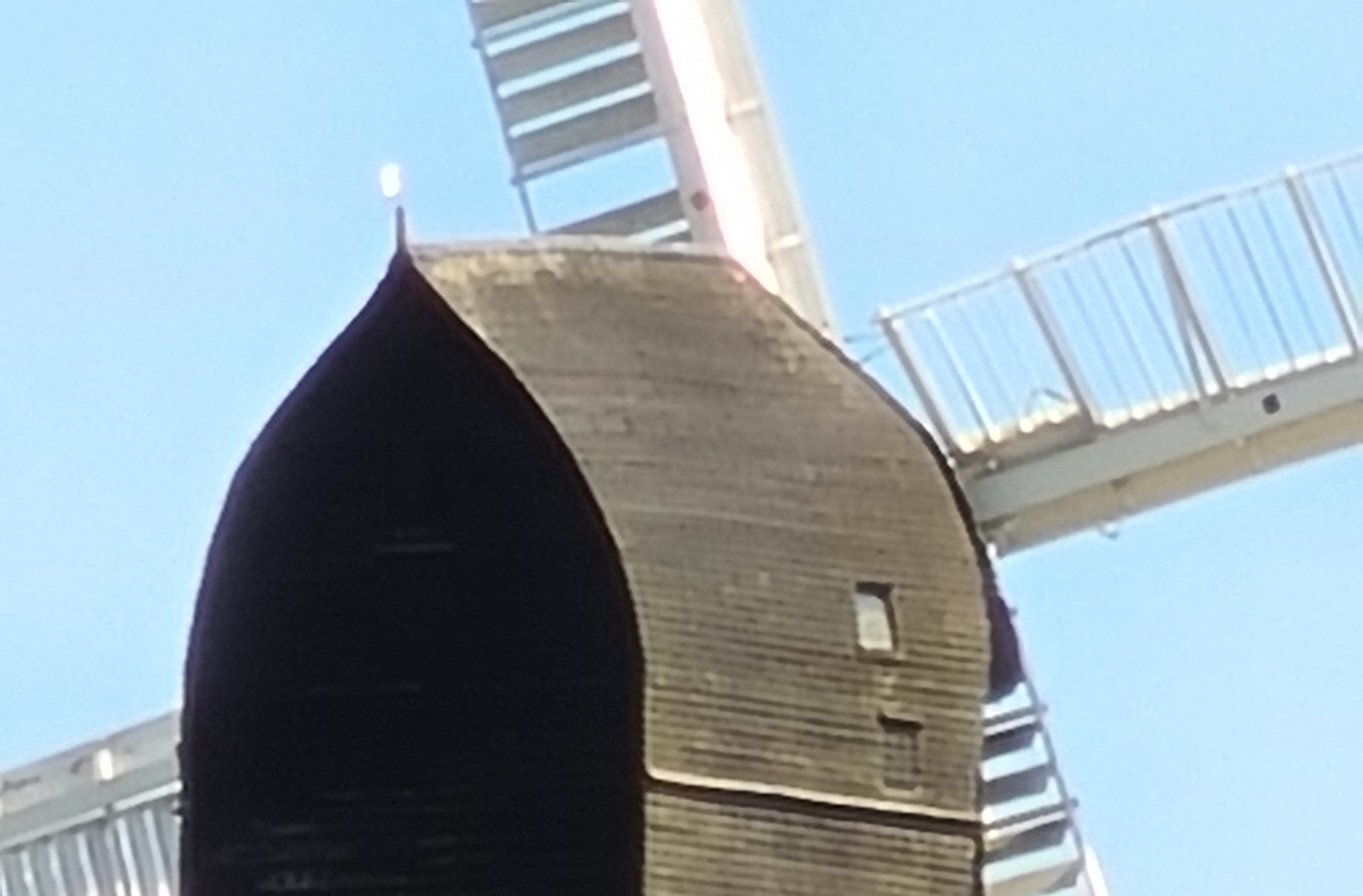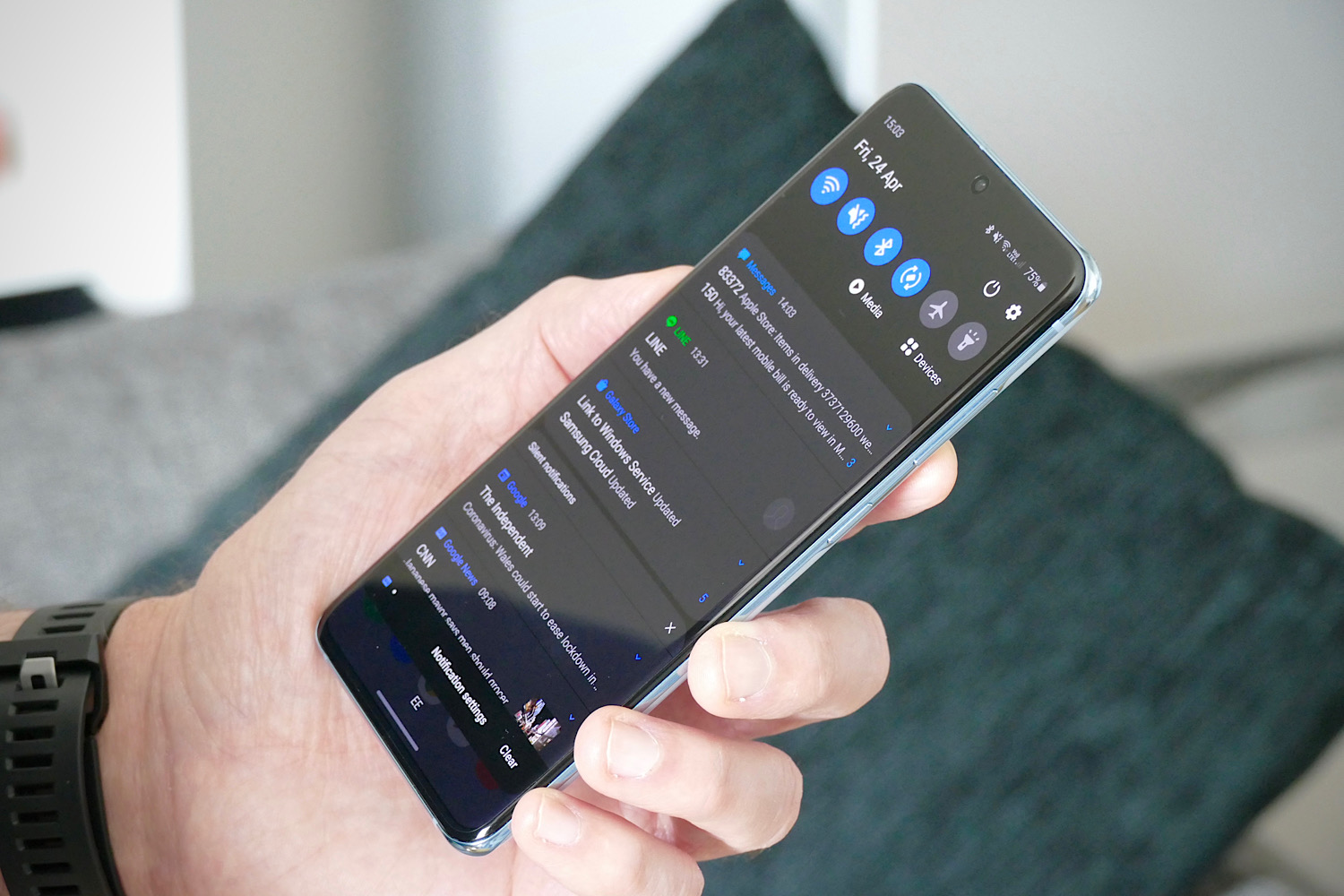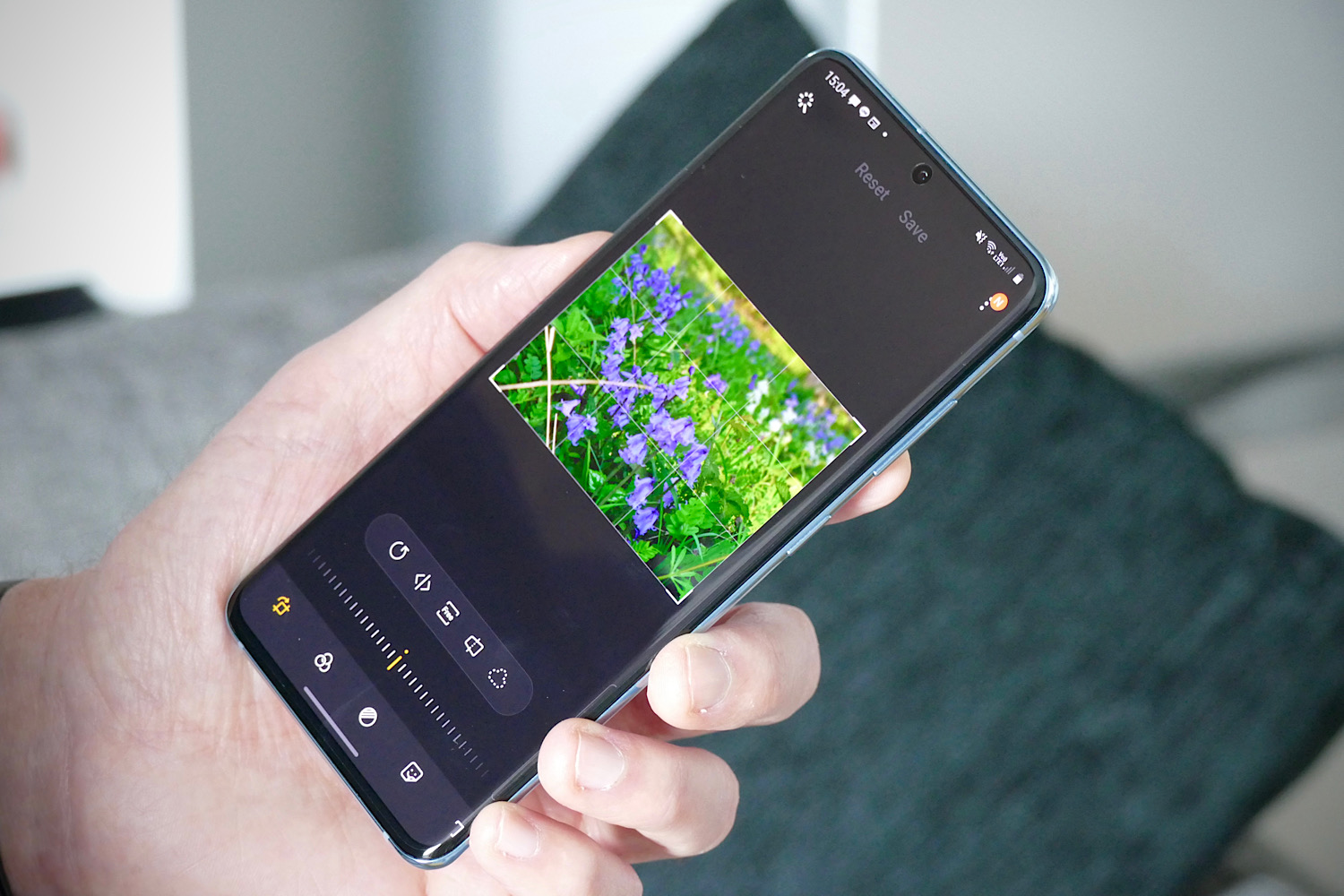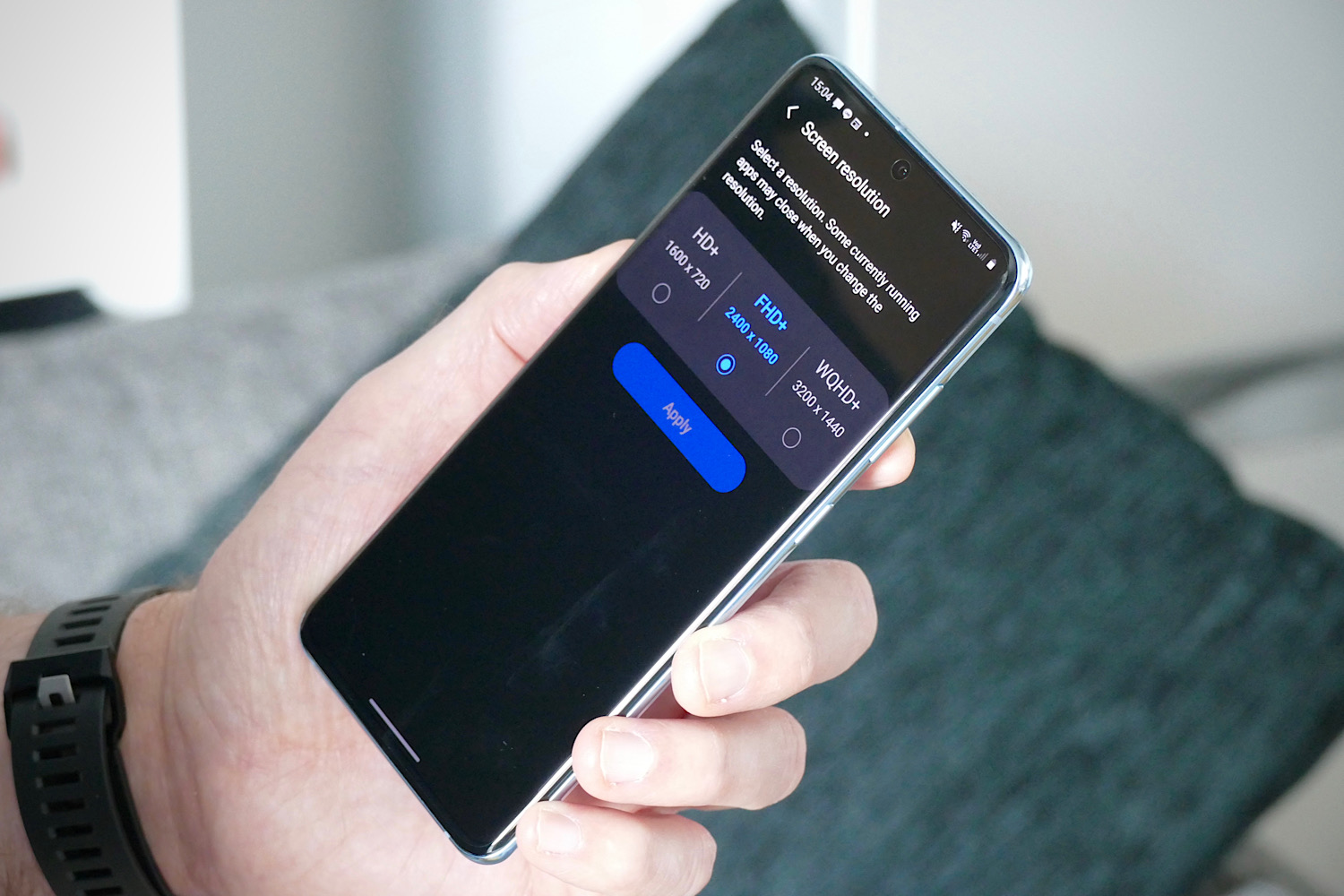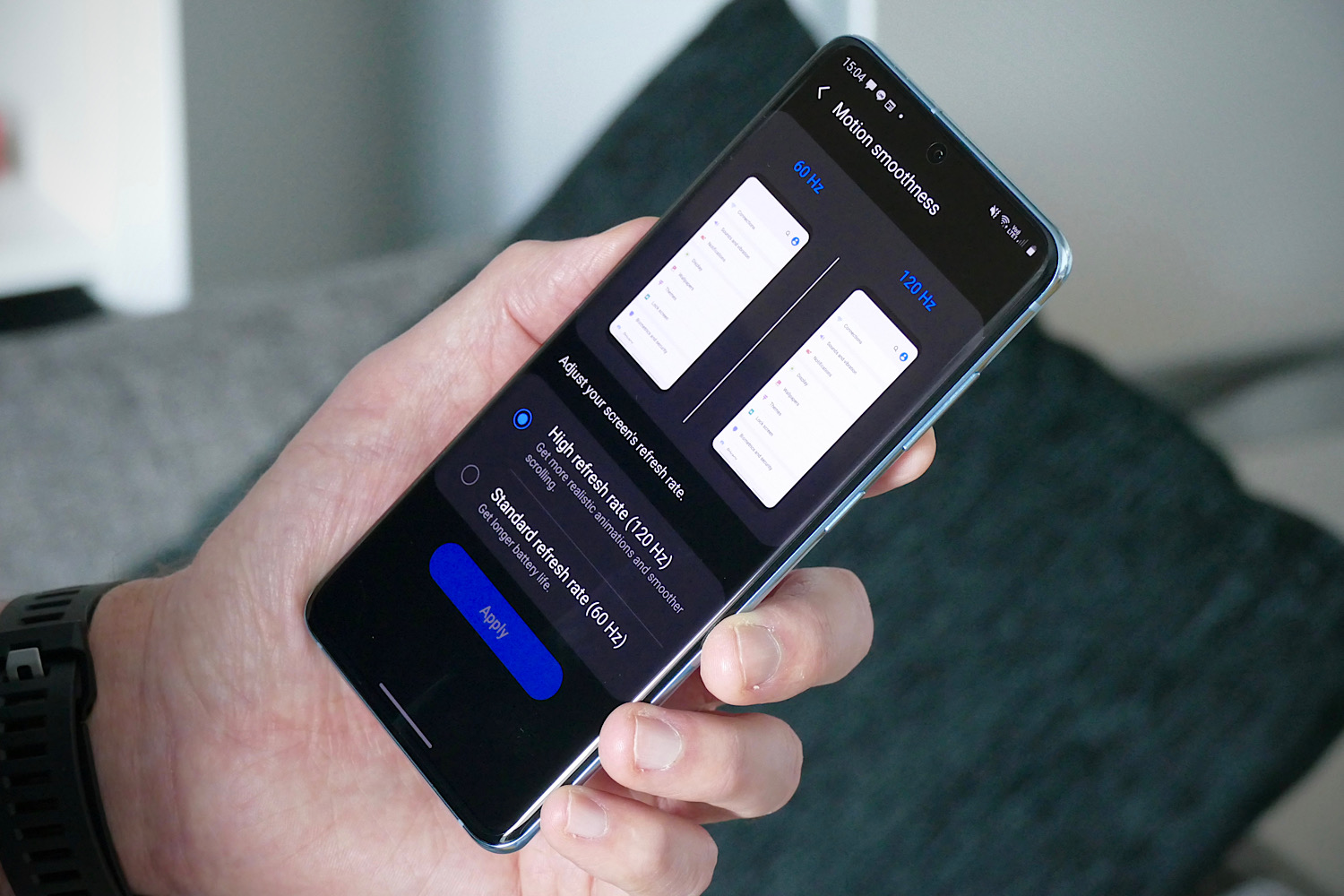“The Galaxy S20 may be the smallest S20, but it's not quite small enough to be a compact flagship phone.”
- Beautiful screen, 120Hz refresh rate
- Camera takes good photos
- Slim, light, and easy to hold
- 5G for the future
- Size doesn't do the screen justice
- Not small enough to be different
The Galaxy S20 is one of the best smartphones. It’s also the smallest member of the Galaxy S20 family. Yet Samsung erred by not carrying over the Galaxy S10e’s even smaller 5.8-inch screen size.
What is the Galaxy S20? It’s a brilliantly capable smartphone that can’t distinguish itself from the ever-so-slightly bigger Galaxy S20 Plus to reach the underserved audience crying out to buy a diminutive flagship phone. Let’s take a closer look at where the Galaxy S20 succeeds, and where it fails.
Design
The Galaxy S20 looks exactly the same as the Galaxy S20 Plus, just on a slightly smaller scale. It’s thin and light at 163 grams and 7.9mm thick, and built around an aluminum metal chassis with Gorilla Glass 6 on the front and rear. The screen measures 6.2 inches, so it’s smaller than the 6.7-inch Galaxy S20 Plus, and just a touch larger than the iPhone 11. I’m very happy to be using the blue version rather than the dull gray Galaxy S20 Plus, as it injects muchneeded character. It’s fun to look at, instead of something that could have been dreamed up by 1984’s Winston Smith on an especially depressing day.

It’s more natural to hold and use, thanks in part to the 20:9 aspect ratio, when compared to the Galaxy S20 Plus and the OnePlus 8, but it’s not that small. Although it’s the baby of the S20 range, it’s not a small phone. If you’ve held the Galaxy S10, it’s essentially the same size, just with a slightly bigger screen. This is possible due to the astonishingly slim bezels. They’re almost invisible down the sides, and only black slivers at the top and bottom. Using the Galaxy S20 really is like holding one large screen in your hand.
I like the little details in the design too, from the way the aluminum chassis bends around the volume and power buttons, to the dainty camera bump on the back, which looks much less offensive here than it does on the S20 Plus. It’s a friendlier, neater, better all-around design. However, the larger screen on the S20 Plus wins me over every time when it comes to watching videos and playing games.

The Galaxy S20 is smaller than the other phones in the range, but it’s not so small that the trade-off between screen size and portability becomes a consideration. The Galaxy S20 fails to be a true compact flagship phone, but it succeeds in being the most attractive of the three Galaxy S20 devices available this year. It’s a conundrum, one ultimately solved by buying the blue or pink Galaxy S20 Plus.
Screen and gaming
The 6.2-inch Dynamic AMOLED has a 3200 x 1440 pixel resolution for an even higher pixel density than the S20 Plus at 563ppi. It has a 120Hz refresh rate, HDR10+ support, and is among the most amazingly beautiful and sharp smartphone screens you’ll stare at. This is also a problem, because you really do have to stare at it, as it feels quite restrictive when taking advantage of its ability to watch video. You’ll enjoy the colors and sharpness more on the S20 Plus or S20 Ultra.
For reading emails and notifications, as well as web browsing, the screen size is great. The 120Hz refresh rate is not activated by default, but it’s highly recommended. It smooths scrolling throughout, resulting in less eye strain and a more pleasant visual experience. It comes with a caveat, in that it can only operate with the screen showing Full HD resolution, and not with QHD resolution active.
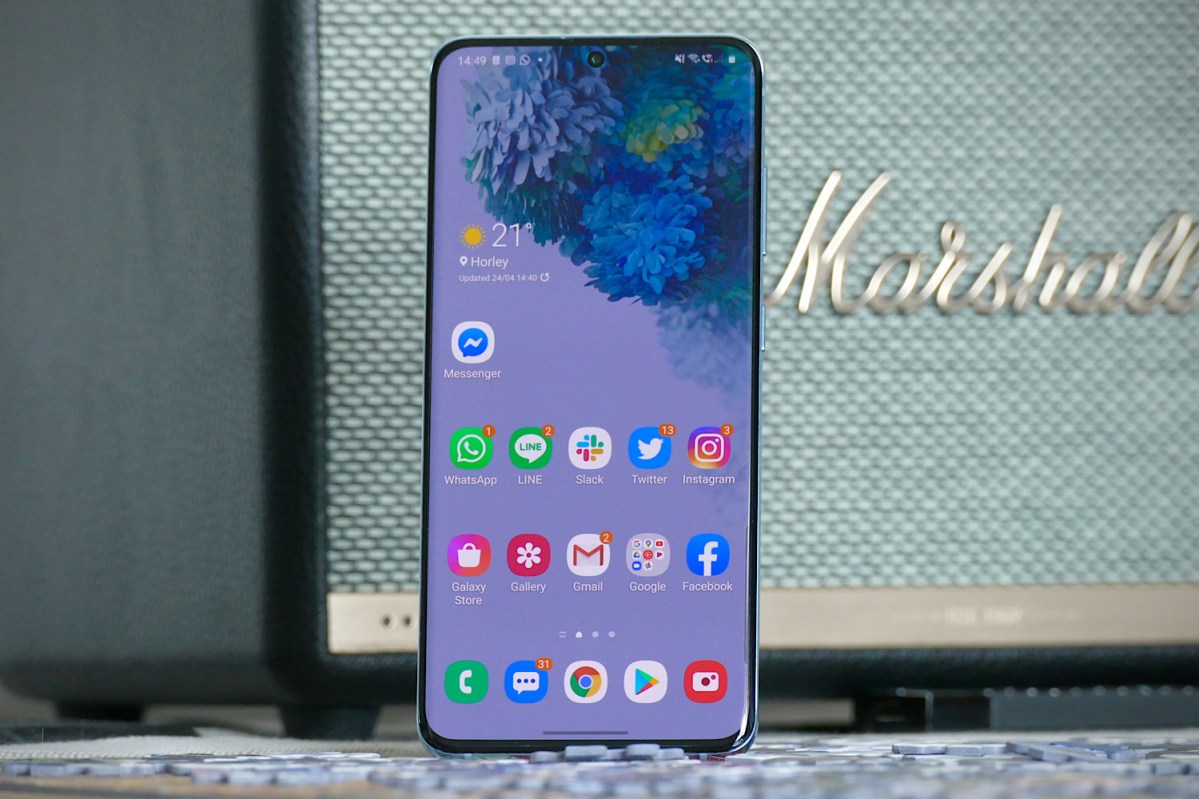
Fire up some video, and YouTube shows 1080p quality content with HDR, if available. Using the NowTV app to watch HBO’s vapid-but-visually supercharged Ballers looks unbelievable, with masses of detail and a very natural color palette. However, the screen aspect ratio hurts the viewing experience, because there are black bars running down either side. Zoom in to fill the screen and you lose some of the image at the top and bottom. Audio is very enjoyable, with plenty of volume, although the bass is limited.
Gaming is great, mostly because of the phone’s immense power and ability, plus the wide range of games available in the Google Play Store. Of course, it’s not quite as immersive as it is on the larger S20 Plus. Dariusburst is a good example of why, as you have to shrink the view right down to compensate for the 20:9 aspect ratio screen. Hill Climb Racer doesn’t suffer in the same way, and although I never really challenge the 240Hz touch sampling rate, the S20 always feels sharp and responsive, making games enjoyable.

The Galaxy S20’s screen is superb, but while I’m willing to work around the downsides of the 20:9 aspect ratio on the larger models, I’m less willing to do so on the midsize S20. If I’m going to pay for the kind of specs and media ability here, I want to be able to truly enjoy them. That means a larger screen.
Camera
The camera on the Galaxy S20 is the same as the one on the Galaxy S20 Plus it’s just in a slightly more compact bump on the back. It houses the main 12-megapixel f/1.8 aperture sensor with optical image stabilization, plus a second 12-megapixel ultra-wide sensor, and a third 64-megapixel telephoto with a 3x optical zoom. It shoots 4K video, has a time-of-flight sensor, and on the front is a 10-megapixel selfie camera.

I found it provides the same performance as the S20 Plus. The camera is versatile, with wide-angle and zoom features, takes decent night mode shots, and has a great phot- editing suite built into the app. The portrait mode is effective but needs some careful use as it sometimes fails to focus, and edge detection does suffer with more complex shapes. When it works, the edit mode to remove color from the background in portrait shots can produce some atmospheric, eye-catching shots.
Please refer to the Galaxy S20 Plus review for more in-depth evaluation, as the camera is the same, and take a look at some of the photo examples here to see how the Galaxy S20 performs against it. The saturation level may put some off, but it’s more restrained than previous Samsung cameras, and I found it gives images taken on sunny days just the right degree of life and visual punch. Note that Night Mode can increase noise while brightening shaded areas, often making the non-Night Mode shot preferable.
Ultimately, the Galaxy S20 takes detailed and colorful photos that you want to share with minimum editing. There are more capable cameras out there, from the iPhone 11 Pro to the Huawei P40 Pro, but the S20 (and the S20 Plus) are crowd-pleasers that will take photos you will be happy with, day or night, and in most situations.
Like the phone itself, the camera is a brilliant all-rounder, which happily does without the gimmicky features on the Galaxy S20 Ultra.
Software and security
The Galaxy S20 has the same Android 10-based OneUI 2.0 software installed as the S20 Plus and the S20 Ultra. I’ve gone into more detail about it in my Galaxy S20 Plus review, but my overall impression remains the same. The colorful, bold, and quite large icons stand out on the screen, and it’s obvious what they do at a glance, plus the look can be customized. For example, by default, it’s a 4 x 4 grid of icons, making it look a bit childish, but it can be switched to a 5 x 4 or a 6 x 4 layout for those who don’t like the big-print-style version.
I have not had problems with any apps, notifications are delivered without issue, and the design hasn’t strayed so far away from Android on a Google Pixel 4 that it’s a mystery voyage — though it’s different enough that it has its own identity. The haptic feedback is tactile, but I don’t like the standard Samsung keyboard because it doesn’t have swipe typing, so switching to Google’s Gboard is preferable.
The problems remain the same. The swipe-in Samsung Daily screen is useless, and the need to use a hidden software button to power off the phone because the hardware button is mapped for Bixby is irritating. On the positive side, using Samsung DeX to connect to my MacBook works well, and way better than it used to be since it now includes the ability to sync photos and music.

I mostly relied on the face-unlock system to secure the Galaxy S20. It’s fast and reliable, even though the phone sometimes doesn’t wake up properly when I pick it up, forcing me to press the power button, which then slows the process down even more. The in-display fingerprint sensor is the opposite. It’s a bit slow and unreliable.
Performance and battery
The golden specs just keep on coming. Purchased in the U.S., the Galaxy S20 has the Snapdragon 865 processor inside with 12GB of RAM, making it one of the most powerful smartphones you can buy at the moment. I’m using the European version with a Samsung Exynos 990 chipset for this review. Here are the benchmark results to see how it compares to the competition.
Geekbench 5: 2753 Muilt-Core/905 Single-Core
3DMark Sling Shot Extreme: 5198 Vulkan
Unsurprisingly, this is almost the same as the Galaxy S20 Plus, which puts it a little behind the Oppo Find X2 Pro and its Qualcomm Snapdragon 865. This indicates how the U.S. Galaxy S20 phones will perform. The OnePlus 8 Pro performed better in the gaming benchmark test, likely attributable to not only the Snapdragon 865’s graphics chip, but also the phone’s additional gaming modes, which are more comprehensive than the Galaxy S20’s.

The smallest Galaxy S20 phone gets the smallest battery. It’s a 4,000mAh cell and is an adequate performer. For daily, moderate use, including a few phone and video calls, the Galaxy S20 ended the day with around 15% left by 11 p.m., but this was when connected to Wi-Fi, so I’d expect it to be pretty much empty if it had been using a cellular network. Using the included 25W USB Type-C wired charger, it goes from 0 to 55% in 30 minutes, and charging to full takes an hour and 15 minutes approximately. The Galaxy S20 also has wireless charging.
Although the Galaxy S20 has 5G, I do not have 5G coverage in my area. I have tried it on both the Vodafone and the EE 4G network. Calls are clear for both, and reception has been good using both cellular and Wi-Fi calling. Although the speaker is small, I never had to constantly reposition the phone to find the right position to hear the caller.
Price, availability, and warranty
The Galaxy S20 costs $1,000 and comes in the cloud blue color seen above, plus a cloud pink, cloud white, and cosmic gray. It’s available to buy now from Samsung, various retailers, and with a contract with carriers. In the U.K., the phone costs 800 British pounds, and is sold through all major carriers, and through Samsung itself too.
You get a standard one-year warranty to cover manufacturing defects, and if you buy the phone directly through Samsung, you can add a Premium Care package that adds accidental damage coverage and 24/7 care for $12 per month.
There are also some discounted alternatives too. If you want those options you can always check our lists for the best Samsung Galaxy deals and smartphone deals.
Our take
The Galaxy S20 is an excellent smartphone, but it doesn’t differentiate itself enough from the larger, more immersive-to-use Galaxy S20 Plus, isn’t cheap enough to be tempting as a budget buy, and isn’t small enough to be a truly compact flagship. If you’re going to spend $1,000 or more on a phone with one of the best screens in the business, you may as well get it in a size where you enjoy it, and that’s on the Galaxy S20 Plus rather than the S20. Provided you understand this, the Galaxy S20 is still a superb smartphone.
Is there a better alternative?
Yes. The Galaxy S20 Plus is the better buy in the Galaxy S20 range. Read our rundown of the Galaxy S20’s and Galaxy S20 Plus‘ specs if you want more details.
If you only want to spend $1,000 on a new phone, then take a very good look at the $1,000 iPhone 11 Pro and the $1,000 OnePlus 8 Pro. Both seriously challenge the Galaxy S20, with excellent battery, camera, and screen performance, all at the same price. The 5.8-inch iPhone 11 Pro will fulfill your desire for a sensibly sized flagship too. You can compare the iPhone 11 Pro and Galaxy S20 yourself if you read our in-depth piece about them.
We also think the $700 iPhone 11 is a great buy. If you want a brilliant camera phone and aren’t worried about battery life, then the Google Pixel 4 XL is worth looking at, and if you’re in the U.K. and want a less common alternative, the Oppo Find X2 Pro fills the gap if you don’t mind spending more.
How long will it last?
Complete with the fastest Qualcomm processor you can get at the moment, a beautiful screen, a decent camera, and 5G for the future, the Galaxy S20 will easily last the duration of a two-year contract and even longer.
It has an IP68 water-resistance rating, so it will survive if it gets wet, but the glass body will benefit from being put in a case if you’re a bit clumsy. Samsung does provide regular software updates for its phones, and its flagships tend to be well-served, but don’t expect them to arrive as fast as they would if you bought a Google Pixel 4 XL or an iPhone 11 Pro.
Should you buy it?
No. Most people should go for the larger Galaxy S20 Plus.




